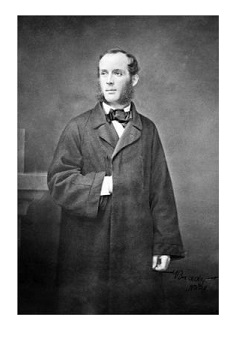Twilight in the Wilderness - Fredric Edwin Church
Oil on Canvas
101.6 x 162.6 cm
The Sun sets over the distant horizon, leaving behind a blood-red and orange sky that is reflected over a wide river. Fredric Church has revealed the power of nature in all its glory. Created on the eve of the Civil War, when its outbreak appeared inevitable, the painting interprets the threatened state of the Country's unspoiled natural environment. The painting depicts a setting in Maine, near Mount Kahadin. The mountains and trees take a backseat to the colorful and expressive sky. Streak red-like clouds dominate the dark blue sky and turn the lake below a blood red. The surrounding landscape is shrouded in falling darkness. The amber glow of sunset peers through the clouds. There is an orange-yellow glow in the background. The sunset in this painting is nearing the end of the day, probably the last hour of the day when the sunlight cuts through the clouds and glitters on the lake. This is a brilliant painting that portrays the artist's connection with nature. Church chose to remove the man from his creations and concentrate on nature in its purest state. It is said that after exploring his native New England, Church went in search of dramatic and panoramic landscapes. He recorded the uncharted marvels he saw with amazing skill, changing the texture of his paintings.
 The
artist Fredric Edwin Church was born in Hartford, Connecticut. He became famous
for his beautiful landscapes. He is
considered at America's most successful artist and possibly the nation's first
artist celebrity. His painting "New England Scenery shows his love of intricate
details. Twilight in the Wilderness is a beautiful depiction of landscape, but
it is more than that. Some critics say that Twilight in the Wilderness depicts
nature, not as god, but as the work of God. The stump is a wilderness altar.
The tree trees symbolize three crosses. Perhaps the bird symbolizes a message
from God. To understand a spiritual connotation, one must realize that just as
the artist somewhat represents himself in his artwork, so perhaps would God
represent himself in his work. Church's dedication to the intricate detail in
the trees is perhaps comparable to the Creator's dedication to the intricate
detail in the universe.
The
artist Fredric Edwin Church was born in Hartford, Connecticut. He became famous
for his beautiful landscapes. He is
considered at America's most successful artist and possibly the nation's first
artist celebrity. His painting "New England Scenery shows his love of intricate
details. Twilight in the Wilderness is a beautiful depiction of landscape, but
it is more than that. Some critics say that Twilight in the Wilderness depicts
nature, not as god, but as the work of God. The stump is a wilderness altar.
The tree trees symbolize three crosses. Perhaps the bird symbolizes a message
from God. To understand a spiritual connotation, one must realize that just as
the artist somewhat represents himself in his artwork, so perhaps would God
represent himself in his work. Church's dedication to the intricate detail in
the trees is perhaps comparable to the Creator's dedication to the intricate
detail in the universe.